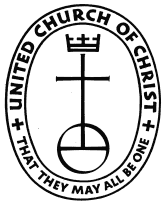Beliefs > Denominations > United Church of Christ
The United Church of Christ
The latter part of the 19th century brought many German-Russian immigrants to the Northwest. They were descendants of German colonists who had been invited by Catherine the Great, Empress of Russia, 1762‑1796, to find refuge in the fertile valleys of the Volga River. They were guaranteed the retention of their mother tongue, religion, and customs. About 100 years later, this guarantee was broken, and great numbers escaped to America, where they found new homes in Iowa, the Dakotas, Nebraska, Colorado, and the Pacific Northwest.
Pietist at heart, free and independent in spirit, these immigrants sought vigorously to preserve their religious practices and the German language among themselves. Their coming initiated a period of church expansion among the Germans of the Northwest. At the heart of this expansion was a deeply personal religious experience that found expression in fervent prayer meetings and spirited revivals. In 1925, among Congregationalists alone, 262 German‑Russian congregations were reported. The Reformed Church in the United States and the Evangelical Synod of North America reported a much lesser number.
What was known as the Brotherhood played, and still plays, an important role in the religious life of German‑Russian immigrants. This Movement originated in Russia, where it thrived as a revolt against a dead, cold faith. Among German‑Russian immigrants seeking to establish themselves in a new land, the Brotherhood did much to preserve traditional practices and united the German‑Russians in a strong bond of common feeling and faith. Sometimes, the Brotherhood existed apart from the church, but almost without exception, members of the Brotherhood provided the nucleus about which new congregations were organized and directed their development.
Today, German‑Russian churches, both Congregational Christian and Evangelical and Reformed, are affiliated with conferences of the United Church of Christ. Many of these churches, while holding fast to an emphasis on a deeply personal religious experience, are accepting current forms of religious expression and taking their rightful place in the denomination they are a part of.
Pietist at heart, free and independent in spirit, these immigrants sought vigorously to preserve their religious practices and the German language among themselves. Their coming initiated a period of church expansion among the Germans of the Northwest. At the heart of this expansion was a deeply personal religious experience that found expression in fervent prayer meetings and spirited revivals. In 1925, among Congregationalists alone, 262 German‑Russian congregations were reported. The Reformed Church in the United States and the Evangelical Synod of North America reported a much lesser number.
What was known as the Brotherhood played, and still plays, an important role in the religious life of German‑Russian immigrants. This Movement originated in Russia, where it thrived as a revolt against a dead, cold faith. Among German‑Russian immigrants seeking to establish themselves in a new land, the Brotherhood did much to preserve traditional practices and united the German‑Russians in a strong bond of common feeling and faith. Sometimes, the Brotherhood existed apart from the church, but almost without exception, members of the Brotherhood provided the nucleus about which new congregations were organized and directed their development.
Today, German‑Russian churches, both Congregational Christian and Evangelical and Reformed, are affiliated with conferences of the United Church of Christ. Many of these churches, while holding fast to an emphasis on a deeply personal religious experience, are accepting current forms of religious expression and taking their rightful place in the denomination they are a part of.
"Lasz mich bei Zeit mein Haus bestellen, |
"Allow me time to set my house in order, |
Sources
"German-Russian Congregations in the United Church of Christ." The United Church of Christ Sunday Bulletin. July 18, 1965. Print. Edited for clarity.
Notes
The United Church of Christ was formed by merging the Congregational Christian churches (including the former German Congregational churches) and the Evangelical and Reformed churches in 1957. This was the first church merger in the United States to unite denominations of different structures and origins. At the time of the merger, there were approximately two million members in 3,547 Congregational and 32 Evangelical and Reformed churches. The merger took 21 years to complete.
Last updated October 22, 2023
